Homemade pici pasta is a rustic Tuscan classic known for its thick, chewy strands that soak up any sauce beautifully. This traditional hand-rolled spaghetti is easy to make at home and perfect for pairing with cacio e pepe, tomato sauce, or a rich ragù.
If you like this recipe, you might like my Creamy Salmon Pasta and Pasta e Patate.
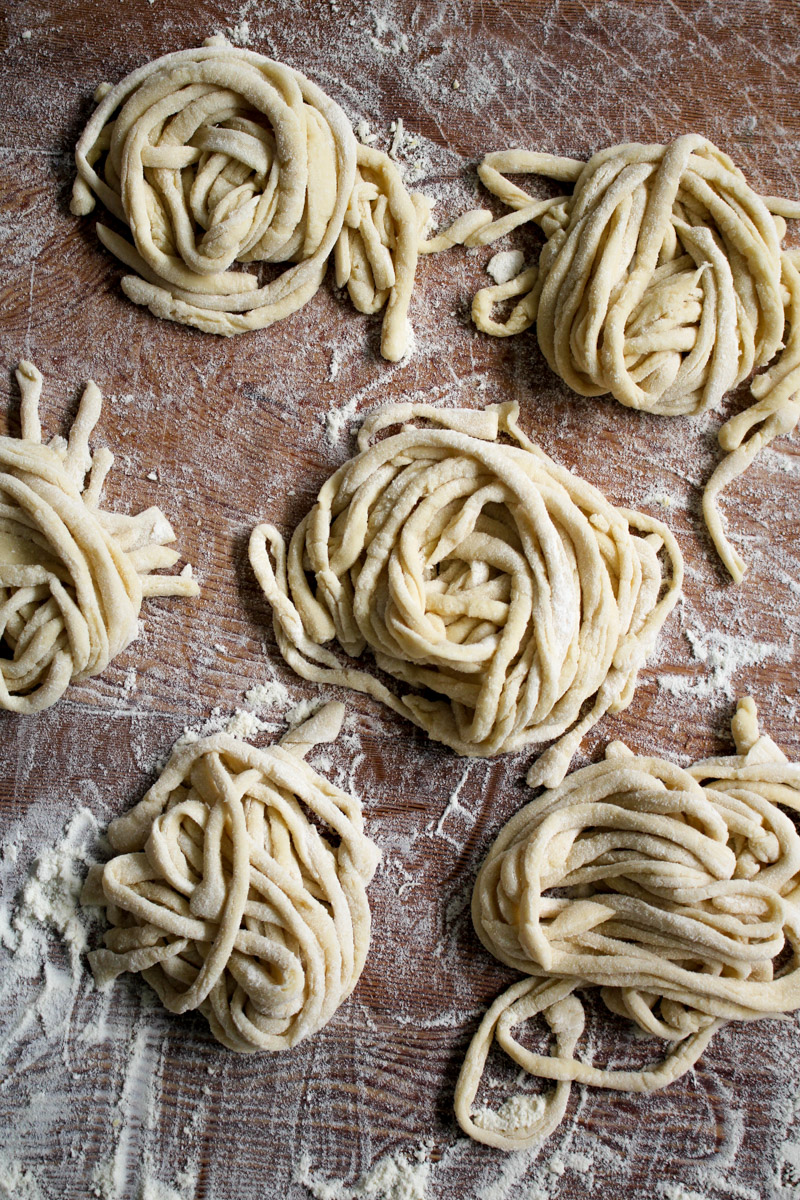
This article contains affiliate links that support us at no extra cost to you.
Jump to:
If you’ve ever visited Tuscany, you’ve probably seen this rustic pasta on a trattoria menu. I had pici pasta for the first time in Siena, where it’s a true local specialty and a staple of traditional Tuscan cooking.
Since that first bite, it has become one of my favorite pasta shapes to make at home, with thick, chewy strands of hand-rolled dough that pair beautifully with cacio e pepe, tomato sauce, or a rich ragù.
Making pici always takes me back to those Tuscan afternoons with a little flour on the counter, time to unwind, and the satisfaction of creating something simple. It reminds me of slow Sunday afternoons in the kitchen, using only my hands and a little patience to bring this rustic pasta to life.
Before we get onto this recipe, you may actually be wondering...
What exactly is pici pasta?
Pici is a thick, hand-rolled pasta that looks like rustic, oversized spaghetti. It comes from the province of Siena in Tuscany, where in the Montalcino area it’s also known as pinci. Traditionally, the dough is made simply with flour and water.
Let's get onto the recipe! It's so much fun to make!
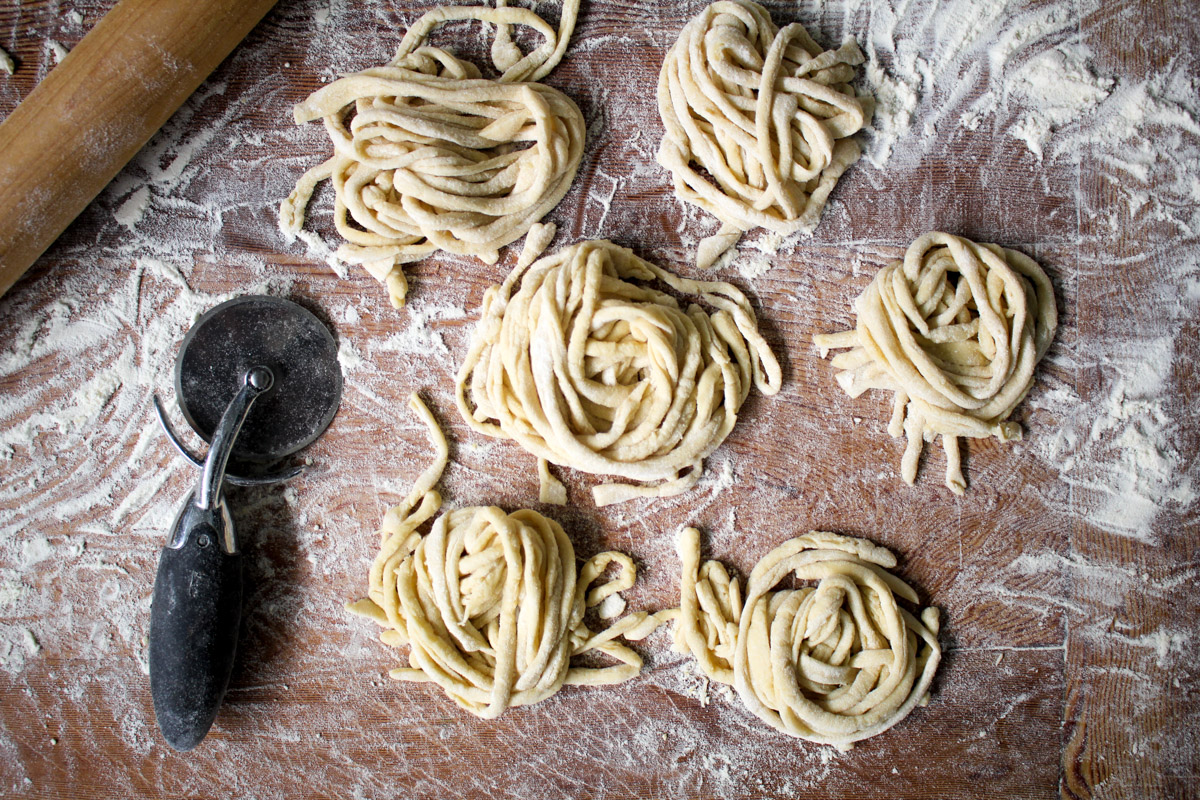
Pici recipe secret from a Tuscan chef
Everyone seems to have their own version they claim is the authentic one. Some make it with just flour, water, and salt, while others add whole eggs and olive oil. My husband learned this version from his Tuscan chef friend, and it’s unique because it uses only egg whites. Over time, he refined the recipe himself to achieve a light, silky pasta that pairs beautifully with both rich and delicate sauces.
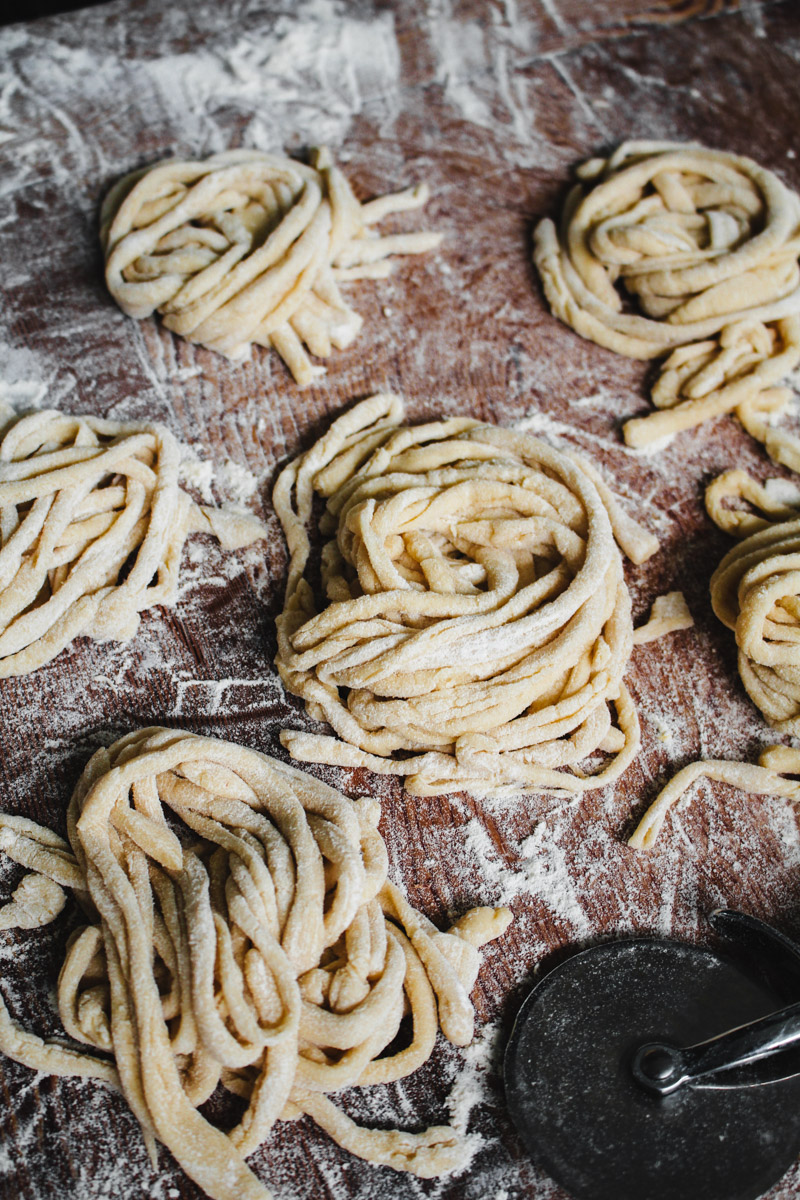
Ingredient Notes
- 00 Flour: The finest Italian flour for smooth, silky pasta dough. You can also use all-purpose flour if that’s what you have on hand.
- Egg Whites: Create a light, delicate texture without adding heaviness.
- White Wine: Adds subtle flavor and helps make the dough supple. You could substitute water for the wine, if you don't have any on hand.
- Extra Virgin Olive Oil: Brings elasticity and a hint of richness.
- Sea Salt: Enhances flavor and strengthens the dough’s structure.

How to Make Pici
Gather your ingredients. There aren't that many to make pici pasta.

- Step 1: Pour the flour into the bowl.
- Step 2: Add in the salt.
- Step 3: Add in the olive oil.
- Step 4: Use a wooden spoon to stir the olive oil and combine with the flour.
- Step 5: Add in the white wine.
- Step 6: Add in the egg whites.
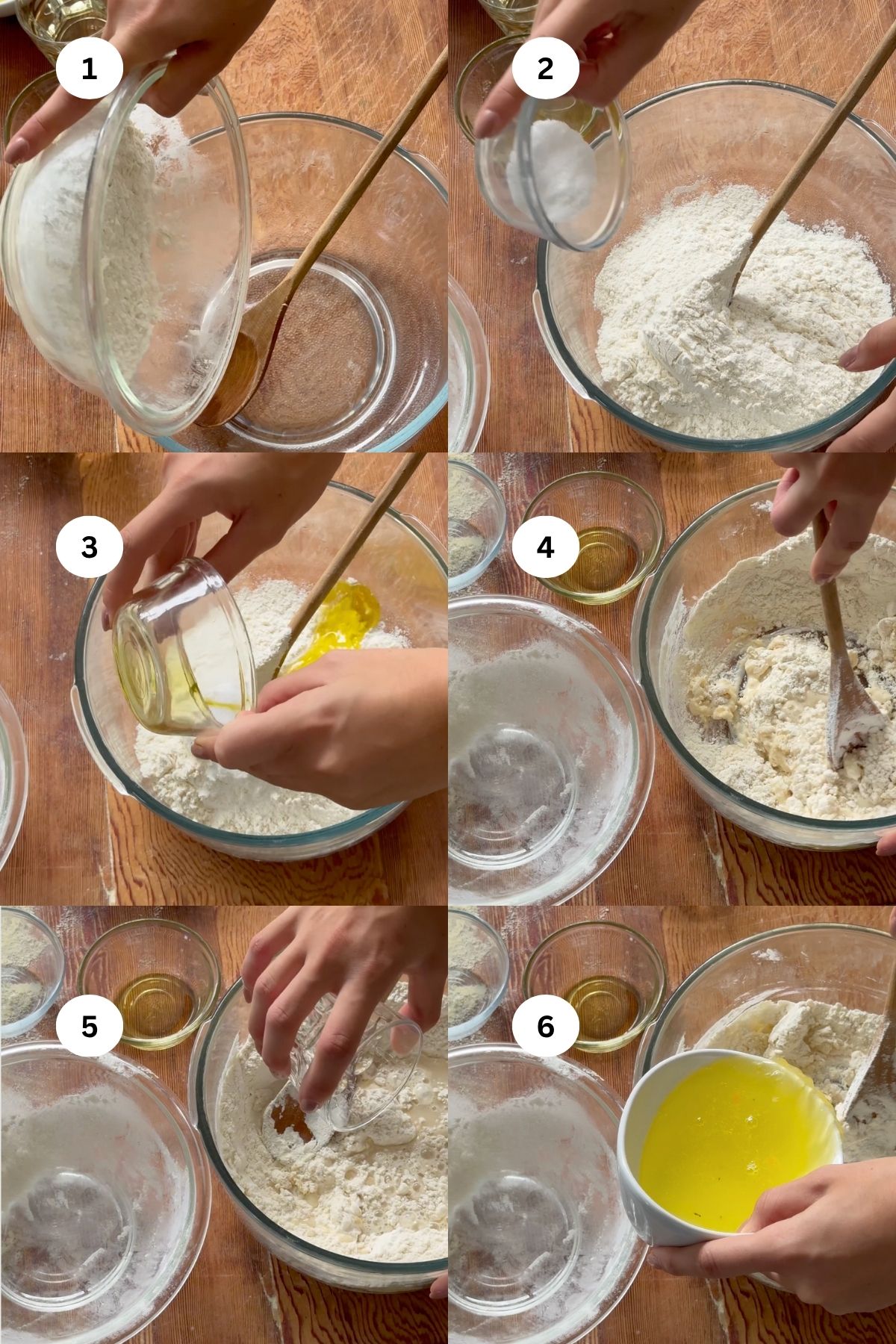
- Step 7-8: Give it a stir and then use your clean hands to combine the ingredients together.
- Step 9: Dump out the dough from the mixing bowl onto a clean work station and begin to combine the dough together with your hands.
- Step 10: Form the dough into a ball.
- Step 11: Add the dough ball back into the bowl and cover with plastic wrap. Let it rest in the refrigerator for one hour.
- Step 12: Remove the dough from the refrigerator. Lift it out of bowl onto a floured work surface. With a rolling pin, begin to roll it out to ¼ inch thickness.
- Step 13-14: With a pizza cutter (or a sharp knife)trim the edges of the dough circle that's rolled out and make it even. Cut the dough into two even sections. With a pizza cutter, begin to slice the pici (thinner than a pencil).
- Step 15: With a pastry brush, brush off the extra flour (to make it easy to roll out the pici). With your hands, begin to roll the pici on the work surface.
- Step 16: While you are rolling out all the pici, you could begin to boil the water to cook them in a large pot.

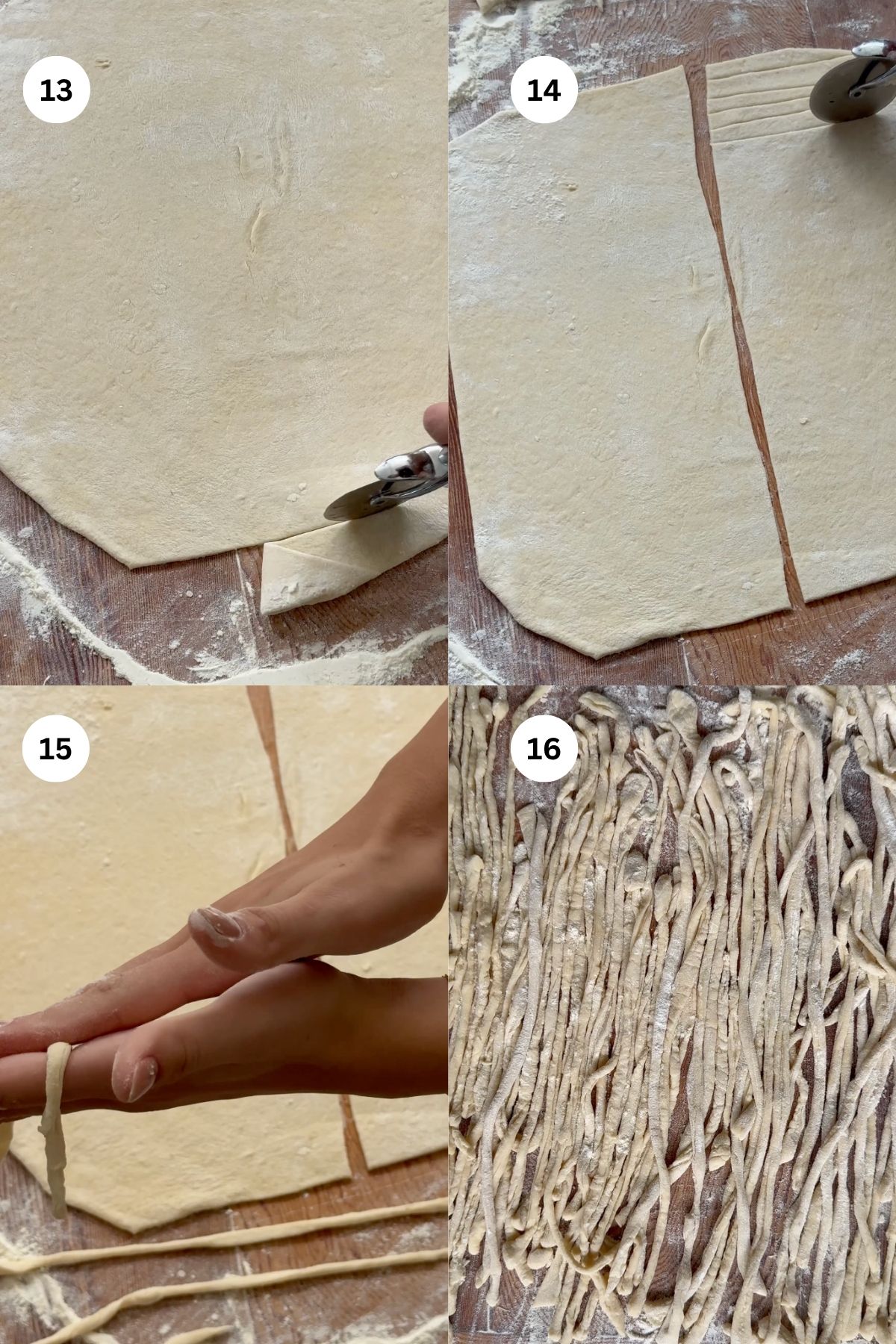
Cooking hand-rolled Tuscan pasta
Cooking homemade pici pasta follows the same basic steps as any fresh pasta. I like to use a large pot with about 5 to 5½ quarts of water so the noodles have plenty of room to move freely. When there’s too little water, the pasta tends to stick together, so don’t be shy with the salt either (about ¼ to ⅓ cup works well). There’s no need to dry the pici before boiling; once it’s rolled, it’s ready to cook. Here’s how to boil homemade pici perfectly every time.
- Fill a large pot about three-quarters full with water and cover it with a lid. Set it over medium heat.
- As you roll out the pasta, the water will slowly come to a boil — if it’s not quite there when you finish shaping the noodles, raise the heat to high.
- Once the water is boiling, add about ¼ to ⅓ cup of salt.
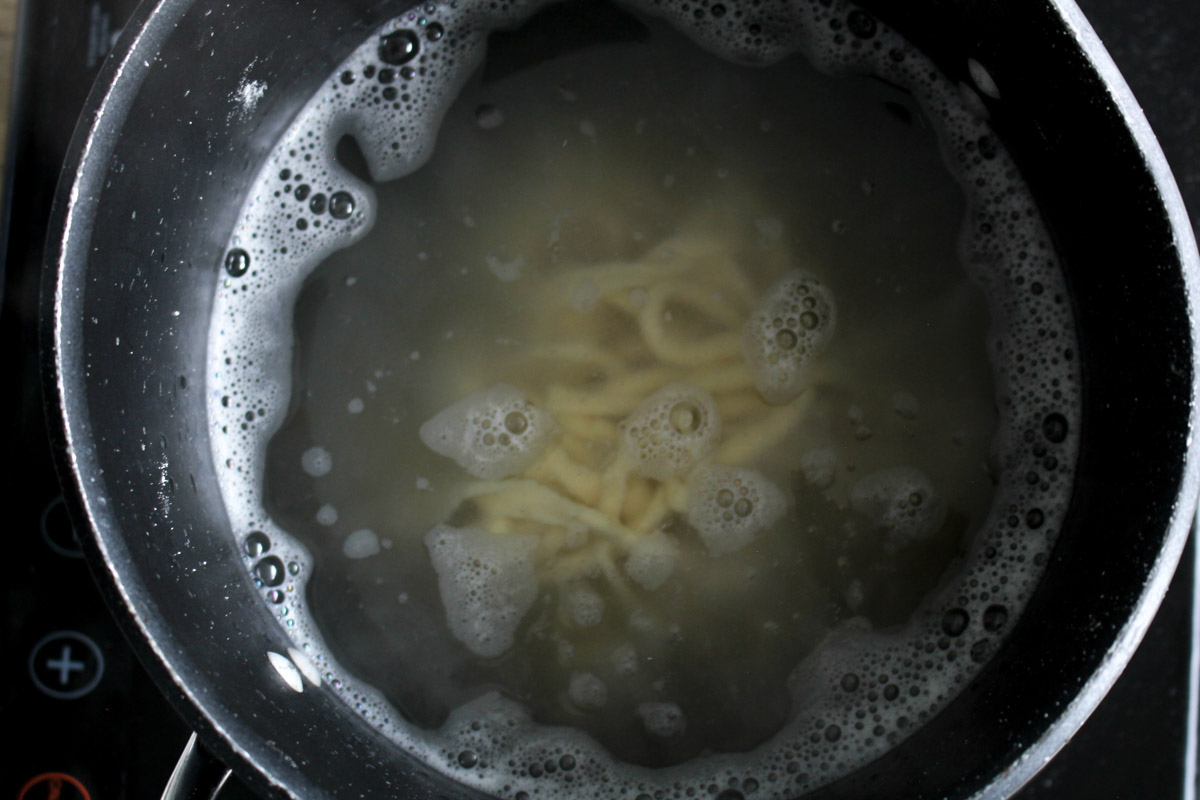
- Gently transfer the pici into the pot, shaking off any excess flour first, and give them a light stir so they don’t stick.
- When the water returns to a boil, lower the heat slightly to prevent it from boiling over.
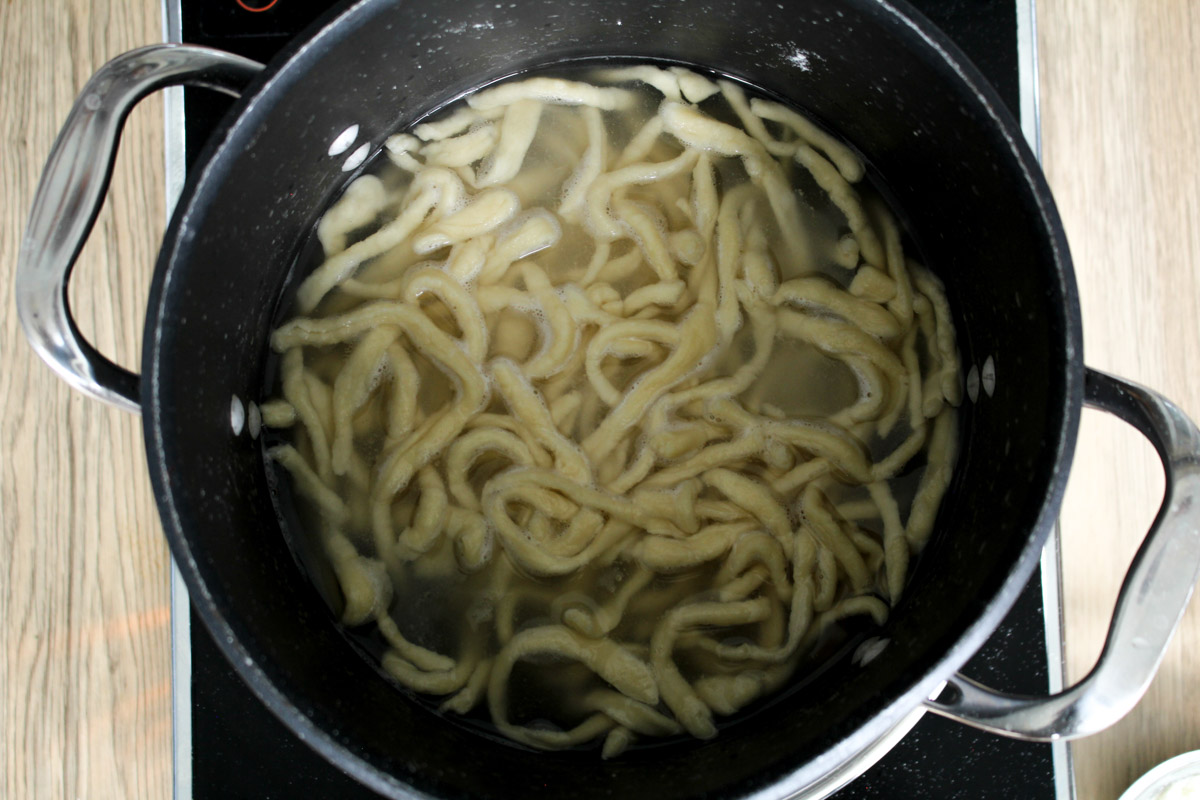
- Cook until al dente. The best way to know is to taste — the pasta should be tender but still have a pleasant bite.
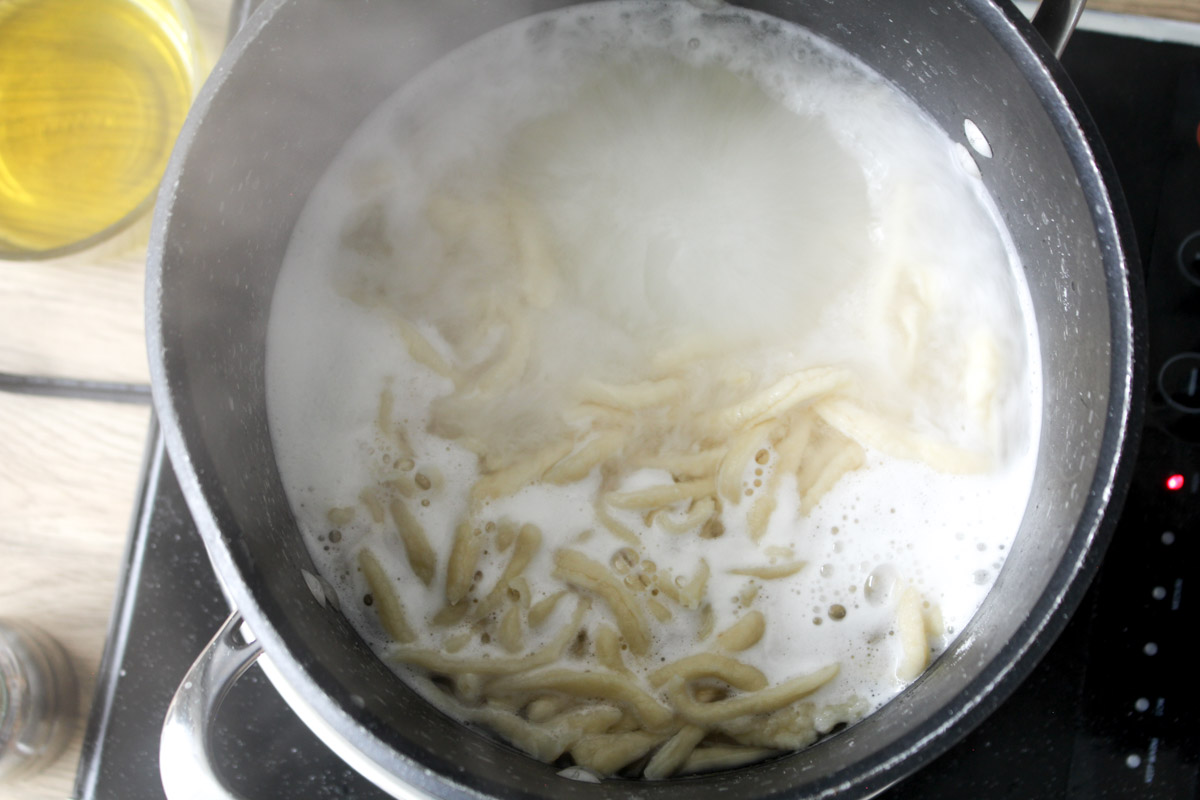
📃 NOTE: Recipe card with detailed instructions are below! Print it out for later!
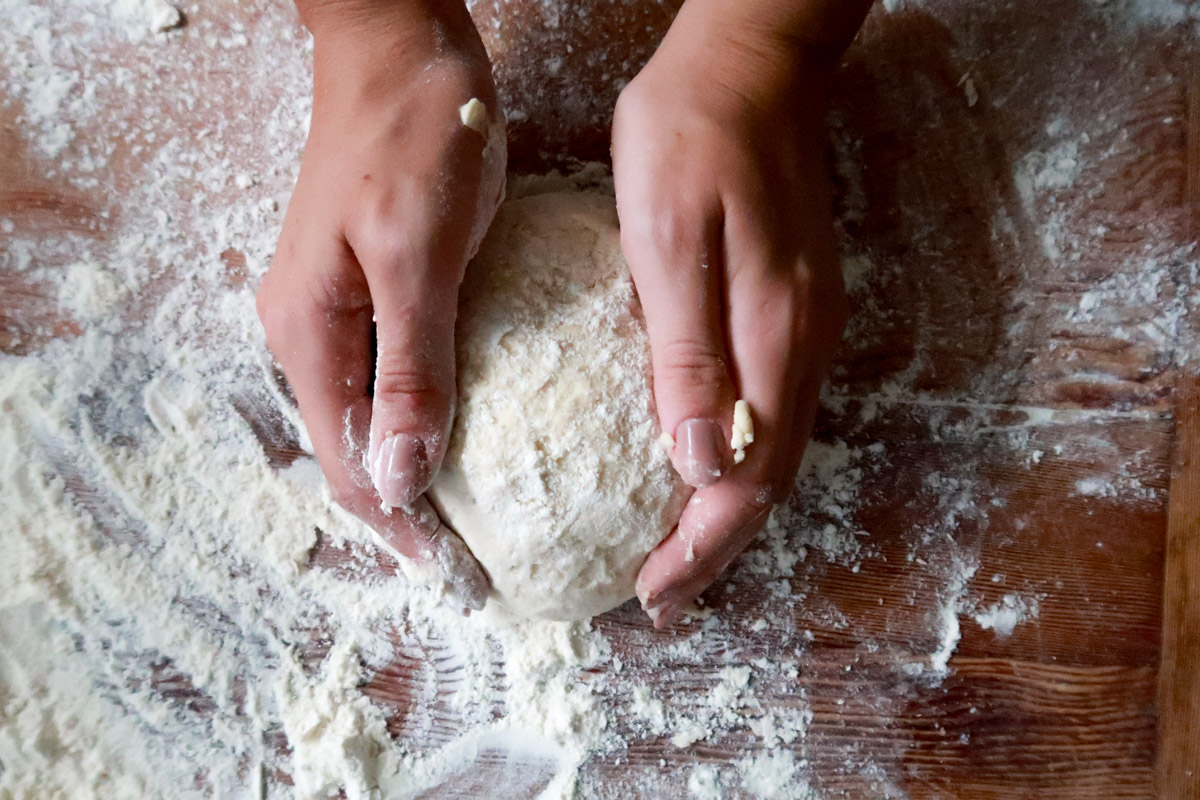
Our Recipe Tips
- Use a kitchen scale for accuracy; pasta dough needs precise ratios.
- Let the dough rest before rolling to make it easier to shape.
- Keep the strands dusted with plenty of semolina so they don’t stick.
- Don’t worry about making them perfectly even — the charm of pici is in its rustic look.
- Roll the pasta on a wooden board for better grip and texture.
- Cook the pici in well-salted water and taste a strand to check for doneness.
- Always transfer the pasta straight into the sauce with a little pasta water to help it cling.
- If freezing, form small nests and dust with semolina before freezing on a tray.

Pici cooking time
- Bring a large pot of water to a boil and season generously with salt. I prefer sea salt or kosher for the best flavor.
- Gently add the pici to the pot and stir with a wooden spoon to keep the strands from sticking.
- Cook for about 2 to 3 minutes, until al dente. Taste one — it should be firm yet pleasantly chewy.
- Drain in a colander, but don’t rinse. This helps the sauce coat the pasta perfectly.
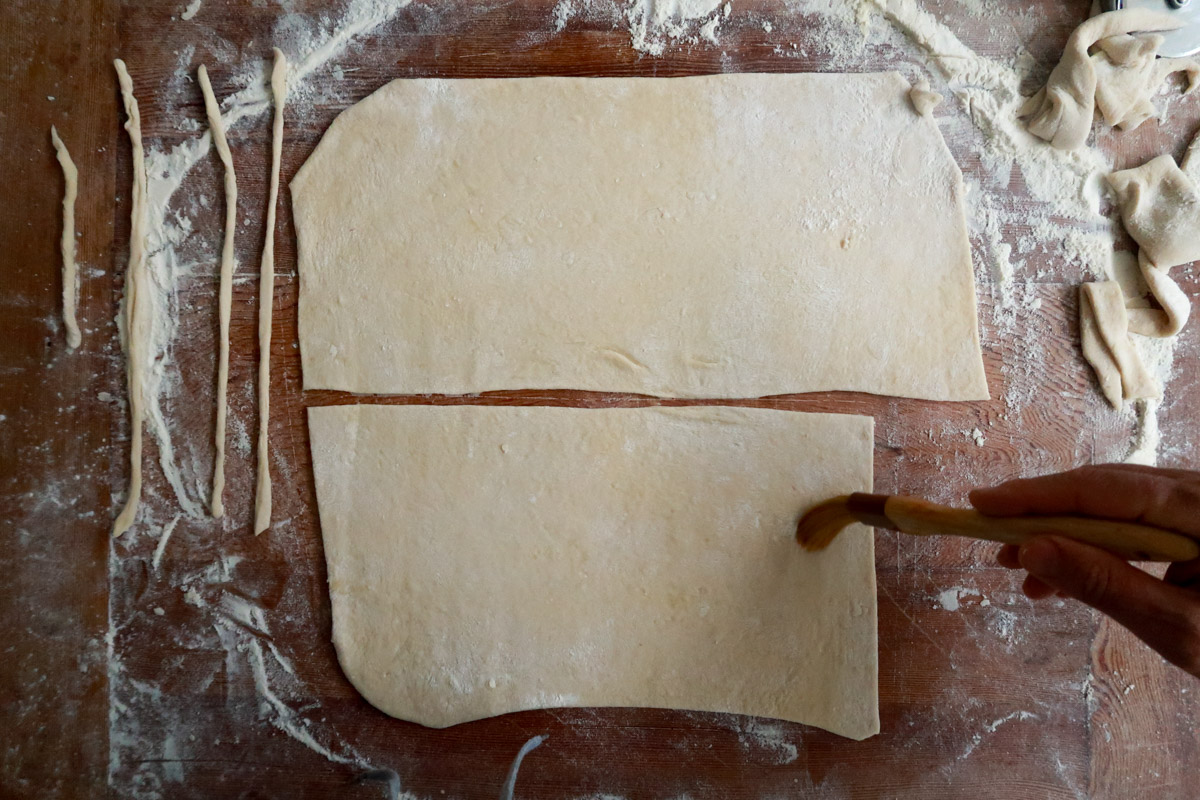
Storing & Freezing
To Store (Short Term)
- Lightly dust the rolled Pici with 00 flour (or AP flour) or semolina to prevent sticking.
- Coil the strands loosely into small nests.
- Arrange them in a single layer on a baking sheet lined with parchment paper.
- Cover with a clean kitchen towel or plastic wrap and keep in the refrigerator for up to a couple of hours before cooking.
To Freeze (Long Term)
- Dust the fresh Pici generously with flour or semolina so the strands don’t stick.
- Lay them out on a baking tray in single layers or small nests.
- Freeze uncovered for 1–2 hours, until firm.
- Once frozen solid, transfer the nests to a freezer-safe container or zip-top bag.
- Label and store for up to 2 months.
To Cook from Frozen
- Do not thaw before cooking.
- Drop the frozen Pici directly into boiling salted water and cook until al dente — it may need about 1 extra minute compared to fresh.
FAQ'S
Yes! I do like to prepare pici in advance and freeze it. Shape the cut out pici pasta into small nests, dust them generously with coarse semolina, and place them on a tray to freeze uncovered. Once they’re completely firm, transfer them into an airtight container or freezer bag. You can cook them straight from frozen — they’ll loosen perfectly in the boiling water.
Yes, you can freeze the dough. Just wrap it tightly in plastic wrap and then in foil to keep it fresh. When stored this way, it keeps beautifully for up to a month.
Yes, you can make the dough up to a day in advance, or roll out the pici and store them on a tray generously dusted with semolina. Keep them covered with a clean kitchen towel until you’re ready to cook.
Pici can be made with 00 flour, all-purpose flour, semolina, or a combination of them. I’ve experimented with many versions over the years, but I always return to the simple, reliable recipe I’m sharing today.
Pici is similar to spaghetti in shape but much thicker and chewier. Unlike spaghetti, which is made with a pasta machine, pici is rolled entirely by hand for its signature rustic texture.
100 g of flour per person is standard for fresh pasta.
1 kilo of flour = enough dough for 10 servings (around 10 main-course portions or 12 smaller primi portions).
What to serve with this recipe
Serve pici pasta with:
- A side of my Authentic Focaccia Bread
- A crisp salad like Insalata Mista
- For dessert, a slice of my Italian Apple Cake
Did you make this and love it? Please RATE THE RECIPE below:)
I would LOVE if you can leave me a star rating and a review down below and let me know your thoughts! It means the world to me to hear how you like it.
Please Subscribe and give a follow on Instagram, Facebook, Pinterest, and TikTok xx
More Pasta Recipes to Try
📖 Recipe
Homemade Pici Pasta
Equipment
- 1 pizza slicer
- 1 large bowl
Ingredients
- 8 cups of all-purpose flour (1 kilo or 35 ounces, spooned and leveled, not packed)
- 10 egg whites
- ½ glass white wine 6 ounces
- ¼ cup extra virgin olive oil
- 2 teaspoons sea salt
Instructions
Mix the Dry Ingredients
- Pour the flour into a large bowl and add the salt.
Add Wet Ingredients
- Drizzle in the olive oil and stir with a wooden spoon to combine. Add the white wine, stir again, then mix in the egg whites. Use your hands to bring the dough together.
Form and Rest the Dough
- Transfer the dough onto a clean work surface and knead it until it forms a smooth ball. Place it back in the bowl, cover with plastic wrap, and let it rest in the refrigerator for one hour.
Roll Out the Dough
- Remove the dough from the refrigerator and place it on a floured surface. Roll it out with a rolling pin until it’s about ¼ inch thick.
Cut and Shape the Pici
- Trim the edges into an even circle, cut the dough into two equal parts, and slice into thin strips with a pizza cutter. Brush off any extra flour, then roll each strip with your hands from the center outward until long and even.
Prepare to Boil
- While you finish rolling the pici, bring a large pot of water to a boil.
Flour and Arrange
- Lay the rolled noodles in a single layer on a floured cookie sheet to prevent sticking.
Cooking pici pasta
- Bring a large pot (about 5 liters) of water to a rolling boil. Once it’s bubbling, add a generous amount of salt and drop in the noodles. Cook for 6 to 8 minutes, stirring occasionally, until perfectly al dente. Lower the heat halfway through to prevent the water from boiling over.
- Drain the pasta and toss it right into your favorite sauce while it’s still warm.
Nutrition Disclaimer
Please keep in mind that the nutritional information presented below is an approximation and may vary depending on the exact ingredients used.
Notes
- Use about ¼ cup of either semolina or all-purpose flour on the cookie sheet to keep the noodles from sticking.
- If two or more people are rolling the dough, it should take around 20 minutes.
- For thicker noodles, the cooking time may increase to about 12 minutes.
- Let the dough rest for at least an hour before rolling. This relaxes the gluten and makes it easier to shape the pici evenly.
- If the dough feels too dry while rolling, lightly wet your hands or sprinkle a few drops of water over the surface (but avoid adding too much or it’ll get sticky).


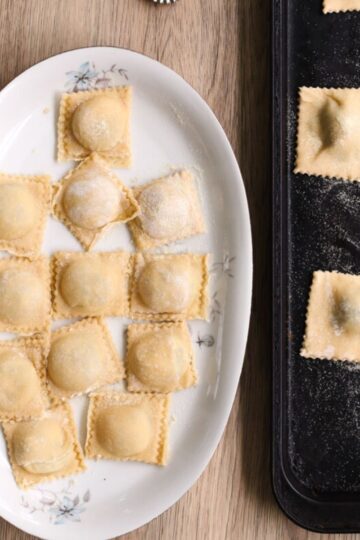
Beth says
Ahhh! I can't wait to make this! I've always wanted to make my own pasta, but I thought I had to invest in a bunch of rollers and cutters. This is great!
Maria says
This pasta looks amazing. I love how substantial it is, and it's so easy to make. Nary a fancy gadget to be seen!
Gabby says
Hi Maria-Yes, that's the fun of pici that you can do it without any fancy gadgets. Thanks for letting me know you enjoyed them!
Kristin says
My family really enjoyed this. I made it yesterday afternoon for a nice spaghetti dinner. I have never had such tasty pasta!
Terri says
This is so good! I was so happy to find this recipe because it made it so easy to make pasta. Most recipes require equipment that I just don't have.
Ben says
I really like this. I decided to try this because I've always wanted to make pasta, and this seemed relatively easy. Once I got the rolling down, I was cooking. Literally.
Gabby says
Hi Ben -So happy you tried out the pici...thanks for letting me know you enjoyed them!
Amy Dong says
This is seriously impressive! There's nothing better than homemade pasta, and pici is such a fun, rustic shape. Your step-by-step is great—I might have to brave this one!
Gabby says
Hi Amy-Thank you...I do hope you try it out! ENJOY!
Mahy says
Delicious pasta. Never made it before, so it has been such a wonderful experience!
Tammy says
Nothing beats homemade pasta and its so comforting to do when the weather gets colder. We've never made pici before so this was so fun to try and it came out delicious!
Catalina says
Made it today and loved how rustic it looked. Simple ingredients, but the texture was amazing.
Angela Campos says
This recipe for homemade pici pasta turned out amazing! It was easy to prepare and the family loved. it. I can't wait to make it again!!